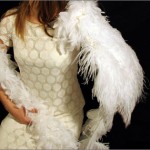As I’ve been exploring ideas around multimodal discourse and sensing, this article, Tech gives humans animal senses, caught my eye. Animals see and/or hear more than humans do unless the human had access to a virtual reality display at the SIGGRAPH09 conference (August 3 – 7, 2009) in New Orleans. From the article by Jason Palmer on BBC News,
The virtual reality scene is based loosely on Cocos Island, west of Costa Rica, and visitors to the exhibit can wander through the island’s forests or swim in its tropical waters, navigating with the aid of a modified Nintendo Wii game controller.
They can switch between ranges of sounds or sights that they might see.
An ultraviolet setting paints a picture rich with both normal colour and reflections we can’t normally see. Visualisation expert Fred Parke has designed the system such that it corrects for perspective as users navigate the space. The programme allows visitors to hear the infrasound vocalisations of whales or the ultrasound clicks of tiger moths.
(There’s more here including a video [prefaced by a Blackberry ad featuring U2] of visitors enjoying the display.) The article goes on to mention that animals have senses that we don’t, for example, “sharks’ ability to sense electric fields.” It’s true true you don’t have that sense unless you’re a body hacker, “a subculture of people who embed magnetic chips into their bodies so they can sense magnetic and electromagnetic fields thereby giving themselves a sixth sense.” (I posted about body hackers here in my exploratory series about robotics and human enhancement) I’m not coming to any conclusions; I’m exploring possible connections and in that context, the interest in extending senses beyond their ‘normal’ range or adding senses come from various sectors seems significant.
On another note, it seems like a good time to mention Heather Haley’s videopoetry event which will take place in Vancouver at Pacific Cinémathèque (usually) in November. Right now she’s asking for submissions,
SEE THE VOICE: Visible Verse 2009
Call For Entries
Nearing 10 years of screenings! Please help spread the word. Thanks!
Pacific Cinémathèque and curator Heather Haley are seeking videopoem submissions from around the world for the annual Visible Verse screening and performance poetry celebration. SEE THE VOICE: Visible Verse is North America’s sustaining venue for the presentation of new and artistically significant poetry video and film.
Official guidelines:
* Visible Verse seeks videopoems, with a 15 minutes maximum duration.
* Either official language of Canada is acceptable, though if the video is in French, an English-dubbed or-subtitled version is required for consideration. Videos may originate in any part of the world, however.
* Works will be judged on true literary merit. The ideal videopoem is a wedding of word and image, the voice seen as well as heard.
* Please, do not send documentaries, as they are outside the featured genre.
* Videopoem producers should provide a brief bio, full name, and contact information in a cover letter. There is no official application form nor entry fee.Send, at your own risk, videopoems and poetry films/preview copies (which cannot be returned) in DVD NTSC format to: VISIBLE VERSE c/o Pacific Cinémathèque, 200–1131 Howe Street, Vancouver, BC, V6Z 2L7, Canada. Selected artists will be notified and receive a screening fee.
DEADLINE: Sept. 1, 2009
For more information contact Heather Haley at: hshaley@emspace.com
You can also check out her website here.
Moving from the artsy to the commercial, the movie GI Joe opened this weekend with a villain determined to take over the world by using nanotechnology weapons. Yes, nanobots or, for this movie, nanomites. Unfortunately, the critics are more interested in excoriating the film than in explaining the ‘technology’ and my eardrums are not up to the task of watching the film but it does seem that this is another variation of K. Eric Drexler’s nanoassemblers eating up the world scenario from his book, Engines of Creation. In contrast, scientists continue their every day nanotechnology research, (from the media release on Phyorg.com)
Today’s advances in nanofabrication include the manufacture of micro- and nano-machines with moving parts separated by distances less than a micron (a micron is a millionth of a meter; a single strand of hair is approximately 100 microns). Because the distances are extremely small, the Casimir force needs to be considered in the design and function of the micro/nano-machines for efficient operation.
“The Casimir force, which is usually attractive, is also large at short separation distances between objects,” explained Mohideen, a professor of physics and the principal investigator of the grant.
